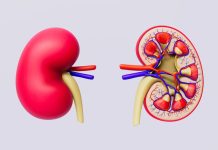
Introduction: The New Research Findings
Recent research has uncovered a potential link between marijuana use and peripheral artery disease (PAD), a condition characterized by plaque accumulation in arteries, limiting blood flow to limbs.
The study indicates that marijuana users may have three times the risk of developing PAD.
While preliminary, this research raises concerns for users and highlights the importance for doctors to inquire about marijuana use when assessing patient risk factors.
Understanding Peripheral Artery Disease (PAD)
PAD is a circulatory issue where narrowed arteries restrict blood flow to extremities, typically the legs.
The narrowing is primarily caused by the accumulation of fatty deposits or plaque, leading to various health complications.
Smoking cigarettes has been recognized as a significant risk factor for PAD. This new study suggests that marijuana may have a similar impact.
Details of the Study
The study was led by Dr. Hirva Vyas from the Hackensack University Medical Center in New Jersey and Dr. Harsh Jain, a resident with the Montefiore Health System in New York City.
The researchers utilized data from U.S. National Inpatient Samples from 2016 to 2019.
Among the 30 million patients in the sample, over 620,000 were marijuana users. Interestingly, more than 2,400 of these users also had PAD.
Unveiling the Association Between Marijuana and PAD
Although the study does not establish causality, it reveals an association between marijuana use and an increased risk of PAD.
Even after accounting for other variables, such as cigarette smoking, the risk remained elevated among marijuana users.
The researchers suggest that marijuana might affect how blood clots or influence peripheral vascular tone. However, the method of consumption was not accounted for in this study.
The researchers highlight that the active ingredient in marijuana, THC, is metabolized differently when smoked versus when ingested, which could potentially influence risk factors.
A Word of Caution
Dr. Robert Page, a professor in the departments of clinical pharmacy and physical medicine at the University of Colorado Anschutz Medical Campus in Denver, cautions that this study only shows an association, not a cause-and-effect link.
Page, who was not involved in the study, emphasizes that while these findings are significant, they do not paint the complete picture, as the method of marijuana delivery and other health risk factors were not considered.
Page explains that THC can affect blood platelets, leading to blood clots. Moreover, smoking marijuana can produce carcinogens and tar, similar to smoking cigarettes, which can negatively affect blood vessels.
Both THC and cannabidiol (CBD) can potentially negatively affect the tone of the vasculature, Page added.
Implications and Future Directions
These findings could be especially relevant for younger adults, who have seen an increased risk of ischemic stroke and early first-time stroke.
The research also suggests a potential link between marijuana smoking and early heart attacks in young adults.
The study’s findings underscore the need for healthcare providers to inquire about cannabinoid use during patient consultations.
Open, non-judgmental conversations about marijuana use are critical to assessing risk factors for both coronary and peripheral artery disease.
The research will be formally presented at the Society for Cardiovascular Angiography & Interventions annual meeting. Until then, these findings should be considered preliminary.
As the understanding of the potential impacts of marijuana use on cardiovascular health continues to grow, more comprehensive research will be essential.
If you care about heart health, please read studies about an important cause of heart disease, and how to remove plaques that cause heart attacks.
If you care about heart health, please read studies about how eating eggs can help reduce heart disease risk, and Vitamin K2 could help reduce heart disease risk.
The study will be presented at the Society for Cardiovascular Angiography & Interventions annual meeting.
Copyright © 2023 Knowridge Science Report. All rights reserved.



